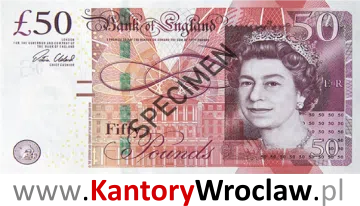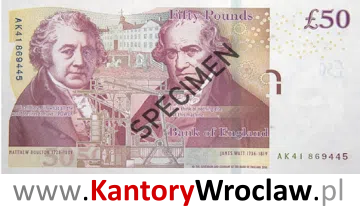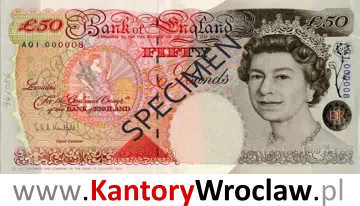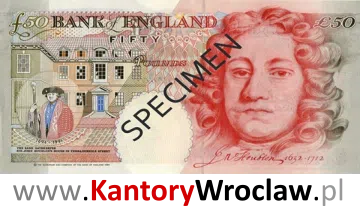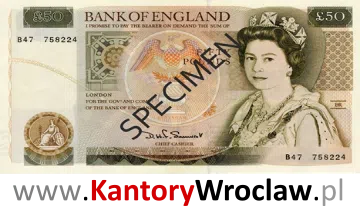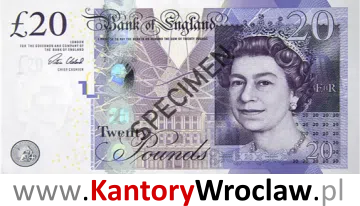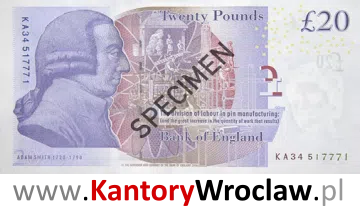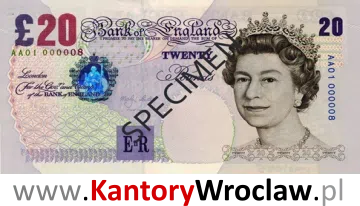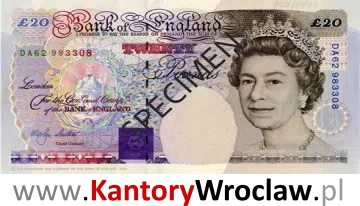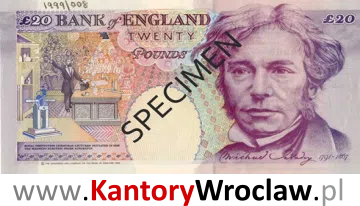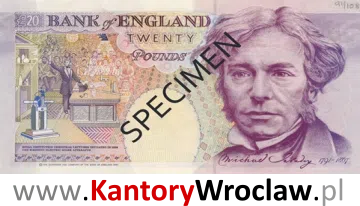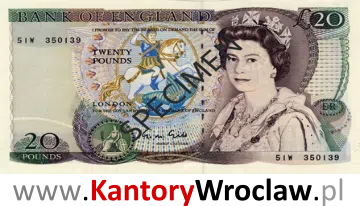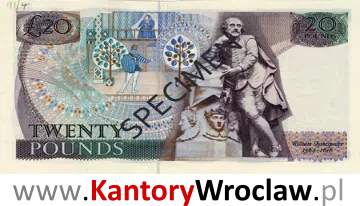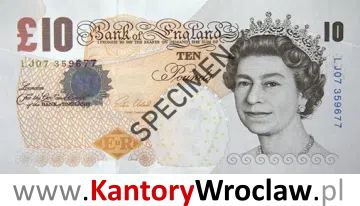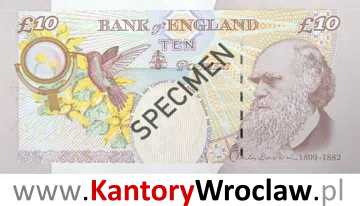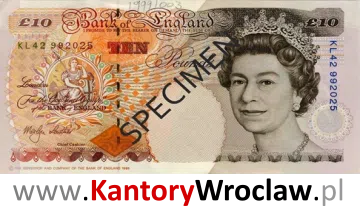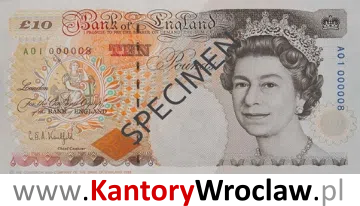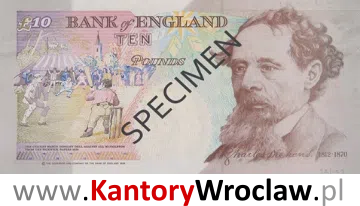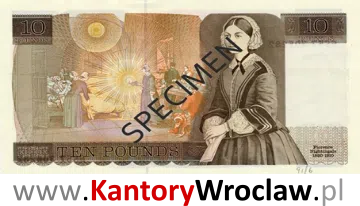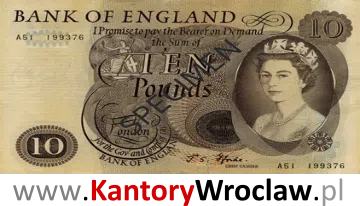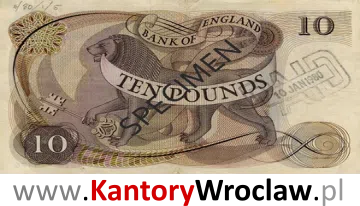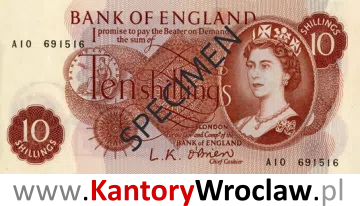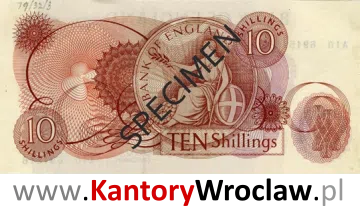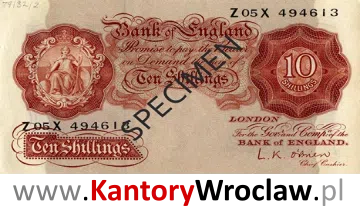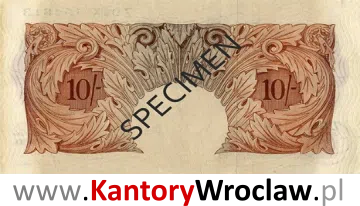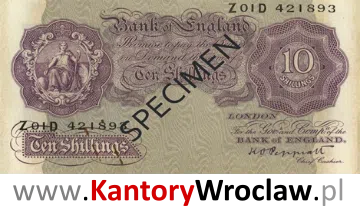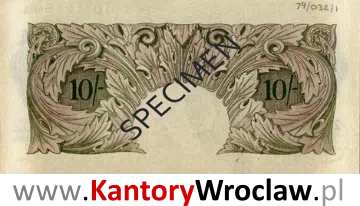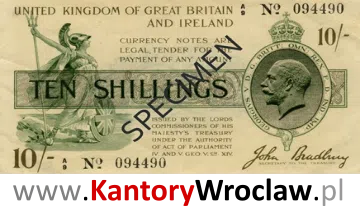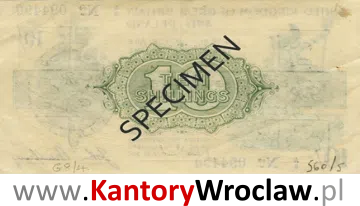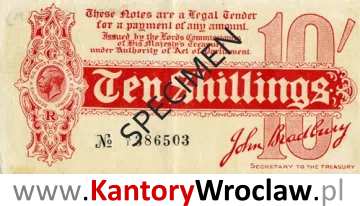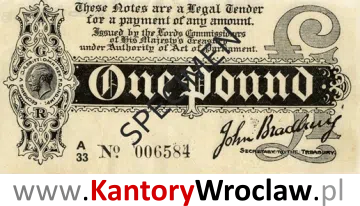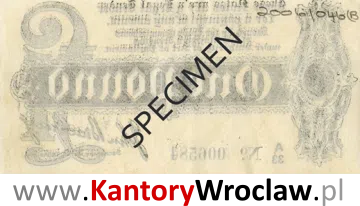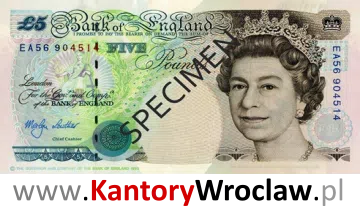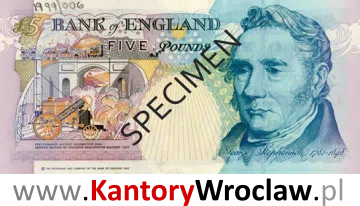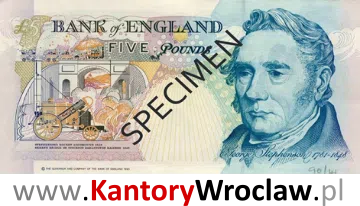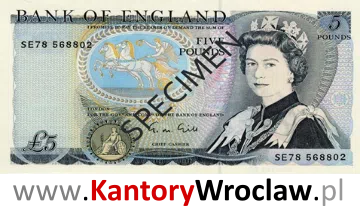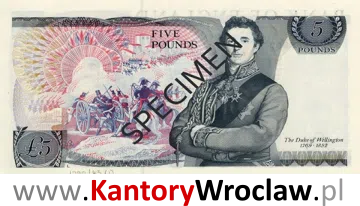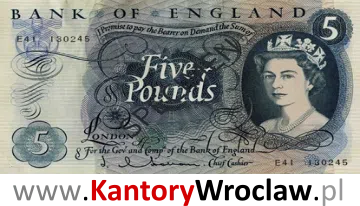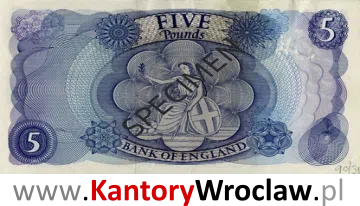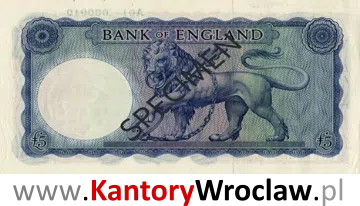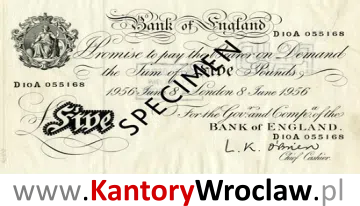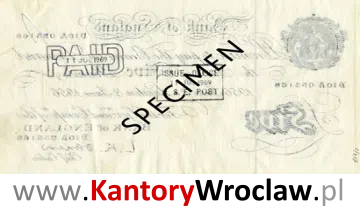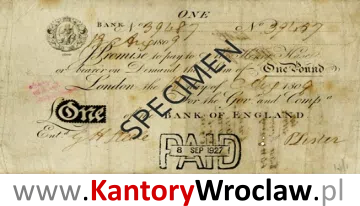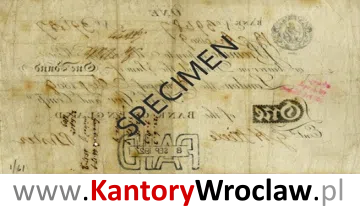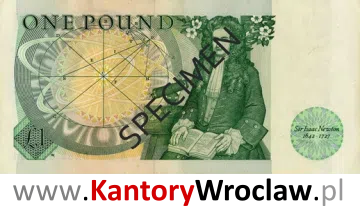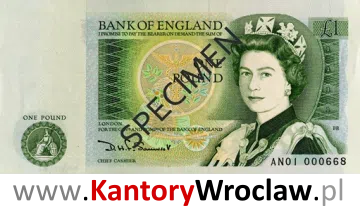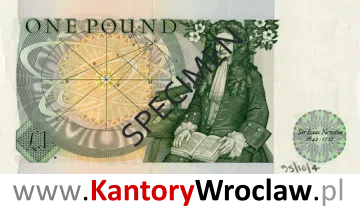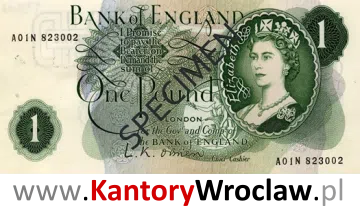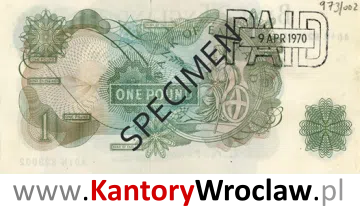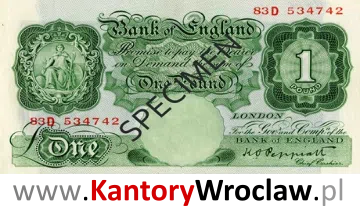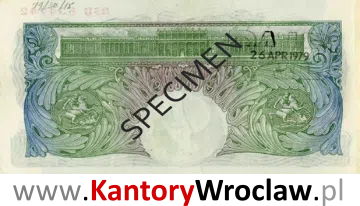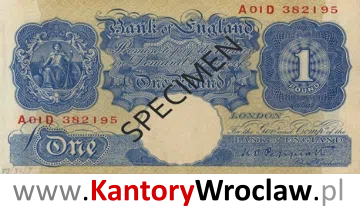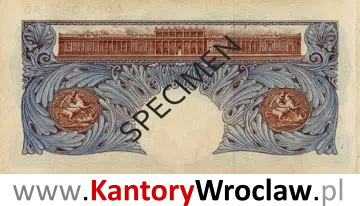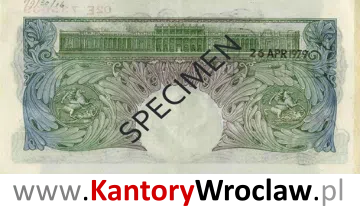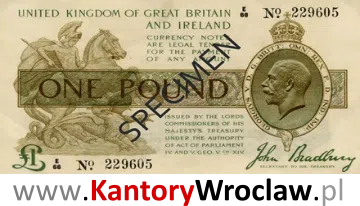| Currency | Purchase | Sale |
|---|---|---|
| GBP England old pound |
4.86023 | 4.98456 |
| Currency | Purchase | Sale |
|---|---|---|
| GBP England old pound |
4.59549 | 5.01483 |
In our Kameleon exchange office in the city center, we buy withdrawn banknotes of many popular currencies, including British pounds or more commonly called British GBP.
Do you have withdrawn British pound banknotes presented on the website and want to sell them? In our exchange office, we buy these banknotes at retail and wholesale prices depending on the amount of currencies purchased - please remember that these are approximate prices and the final offer will be presented by the currency cashier during the exchange. We would like to remind you that the last banknotes to expire are paper banknotes with denominations of £20 from 2007 and £50 from 2011. The main change is not only the new images of famous people but above all the material used. The new banknotes are made of polymer instead of traditional paper, and this innovation aims to provide greater durability and, above all, to increase the level of security against potential counterfeiting. Thanks to this, the new banknotes not only look modern, but also meet the highest security standards, which is a benefit for both users and financial systems.
The most common withdrawn banknote in our country is the paper 50 pound note issued in 2011 and ceased to be legal tender in 2022. The obverse shows Queen Elizabeth, who died in the same year, all in dark red.
The painting shows the outstanding engineer James Watt and his business partner in the steam engine, Matthew Boulton. It is thanks to these two gentlemen that technological progress has occurred on the Isles. Please see if you have this banknote as it is the most frequently purchased one in our currency exchange offices.
The first side of the banknote, which was withdrawn from circulation in 2014, is distinguished by a characteristic print in two main colors: brown and black and red and purple, the next element is a portrait of Queen Elizabeth II and an image of Britain.
The reverse of the banknote presents eminent figures and a historical place, on the left you can see the bank guard symbolizing financial security, and on the right depicting Sir John Houblon - the first governor of the Bank of England, and on the side of his house.
Important! A popular banknote that we purchase at our exchange office is the twenty-pound paper banknote introduced into circulation in 2007, but it was withdrawn from circulation on September 30, 2022. The obverse motif of this banknote, like the previous ones, is Queen Elizabeth II. I invite you to visit our Kameleon currency exchange office in Wrocław, located in the city center, where we always offer the best prices. Check out our purchase offer and see that you can always count on attractive conditions with us.
The reverse of the twenty-pound note withdrawn from circulation in 2007 is decorated with the image of Adam Smith - an outstanding economist, philosopher and writer. His figure is a tribute to the intellectual heritage that contributed to shaping economic theories. We are interested in purchasing any quantity of this banknote and we offer the best prices.
Withdrawn from circulation in 2010 - continues the theme of earlier editions by presenting icons of British heritage on the front. Queen Elizabeth II, personifying stability and tradition, takes pride of place on the right while the majestic figure of Britain is on the left, the main colors of this series are black, turquoise and purple and purple.
The reverse features a portrait of the eminent British composer Sir. Edward William Elgar paying tribute to his musical heritage Worcester Cathedral on the left adds atmospheric beauty and historical significance to the scene. In the lower left corner there is the figure of Saint. Cecilia, patroness of music, and an angel floating above.
The front side of the banknote, which was withdrawn from circulation in 2001, is a unique image whose modifications compared to the previous version introduced subtle but effective changes. In the upper left corner we will notice the £20 denomination symbol in deep purple, giving it a new and elegant expression, and an additional black denomination symbol has been introduced, which makes the identification of the denomination even more precise.
In this innovative edition of the banknote, you can notice surprising changes in colors compared to the previous version, the obverse of the banknote shows a portrait of Michael Faraday in the right part, while in the left part you can see the scientist during a fascinating lecture with students and during an experiment where a device with a magnetoelectric spark arouses curiosity.
This version was withdrawn from circulation in 2001. The dominant color is purple, on the obverse there is a portrait of Queen Elizabeth II on the right side with a crown placed in the upper right corner, emphasizing her royal status, and on the left side there is a symbolic motif of Britain representing the national heritage.
The reverse presents the outstanding English physicist and self-taught chemist Michael Faraday, you can also see a scene from a lecture with students. Additionally, in the lower left part of the banknote there is a device with a magnetoelectric spark, which is a symbolic representation of his groundbreaking research.
The first side of the banknote looks unique with the dominant colors of brown and orange, giving the banknote both elegance and expressiveness, the portrait of Queen Elizabeth II also proudly presents itself, and a special diamond symbol was placed with the visually impaired in mind, which emphasizes the concern for accessibility for all social groups.
The portrait shows the English creator of the theory of evolution, the outstanding naturalist Charles Darwin, on the right part of the back page, the next element is a hummingbird hovering over flowers and a magnifying glass emphasizing Darwins scientific legacy.
On the obverse of the banknote, in the left part, there is a majestic figure of a seated Britain, the watermark on the banknote is the image of Queen Elizabeth II, adding elegance and prestige. Polychrome prints dominate in shades of purple, brown, orange and yellow, while the series and numbering of the banknote are precisely made in blue and red.
The reverse of this unique banknote is decorated with a portrait of Charles Dickens himself, located next to the cricket match scene in the left part, and additionally, symbols of the value of £10 are located both in the upper left and upper right corner of the banknote - an extraordinary combination of cultural art and financial value.
Another withdrawn banknote, this time from 2003, in red and brown colors, presents a distinctive motif on the obverse, characterized by a subtle change in the appearance of Britain.
A portrait of the unforgettable novelist Charles Dickens pays homage to his literary heritage, a cricket match is depicted at the top and the words BANK OF ENGLAND are clearly placed
Another banknote that sometimes appears in purchases is the 5-pound note issued in 2002 and withdrawn in 2017. It will not be a surprise who is in the portrait, i.e. the Queen Mother and the hologram.
The reverse shows a portrait of Elizabeth Fry, a social activist fighting to improve womens lives and the founder of an institute for nurses.
A less common banknote, on its obverse there is a middle-aged monarch, Elizabeth, with a crown on her head. This motif is repeated on most banknotes along with the image of Britain, the colors interspersed with blue and green.
Who constructed the steam locomotive? On the back of this withdrawn banknote you can see a portrait of George Stephenson and a drawing of a locomotive.
The series E banknote withdrawn in 2003 features a portrait of Queen Elizabeth II on the right side with a crown emphasizing her royal dignity, while on the left side of the banknote there is a seated figure of Britain, which adds character and symbolizes national pride.
The reverse of this banknote features a portrait of George Stephenson, an outstanding engineer who played a key role in the development of railway technology, and next to him is a steam engine.
